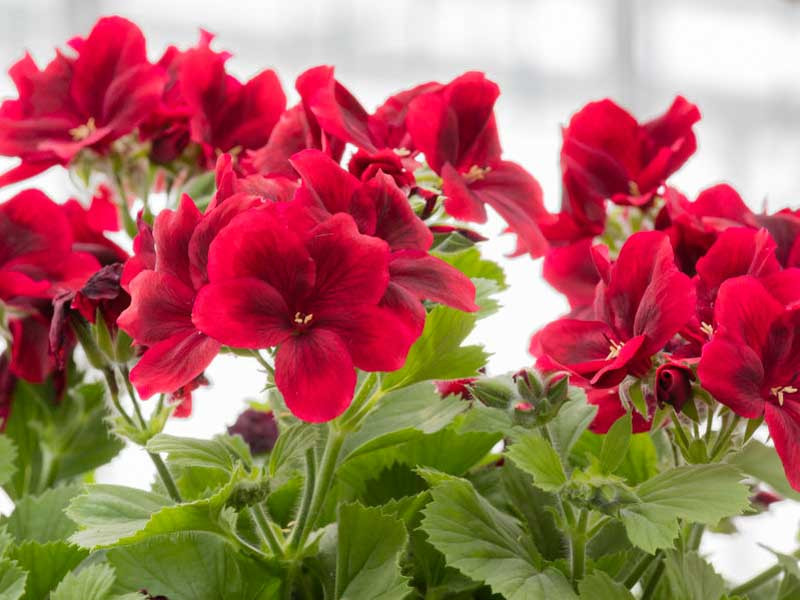Pelargonium (Geranium)
Pelargoniums is a genus of flowering plants that belongs to the Geraniaceae family and is often referred to as geranium. There are over 200 geranium species and countless cultivars, each with its unique features and characteristics.
Pelargoniums have a long history of cultivation, with evidence of their use dating back to ancient Egypt and Greece.
Confusion: Pelargonium is often confused with the true geranium, which belongs to a different genus altogether. The confusion may stem from the fact that pelargonium is commonly referred to as “geranium”. However, geranium is a separate genus of plants, also known as cranesbills.
Native: Pelargoniums are native to South Africa and Australia, and their natural habitats range from dry desert regions to moist, shaded woodlands.
Flowers and foliage: Pelargoniums are prized for their beautiful, showy flowers, which range in color from white and pink to red, purple, and orange. The flowers are borne in clusters on branching stems and are often accompanied by fragrant foliage.
Culture: Pelargoniums are easy to grow and care for, and they thrive in full sun to partial shade with well-draining soil. They prefer regular watering and benefit from regular fertilization to promote healthy growth and blooming.
Uses: Pelargoniums are often used in container gardens and as bedding plants and are a popular choice for gardeners of all skill levels. They are versatile plants that can be used in a variety of garden settings, from formal landscapes to informal cottage gardens, and can be grown as perennials or annuals, depending on the climate.
Medicine: Pelargoniums are often used for medicinal purposes and are rich in essential oils that are valued for their antiseptic and anti-inflammatory properties.
Fragrance: Some species of pelargoniums are often used in the perfume industry due to their sweet, floral scent.
Edible: The leaves of some pelargoniums are edible and can be used to flavor desserts, teas, and other dishes.
Mosquito repellent: Some pelargoniums are known for their ability to repel insects, such as mosquitoes, and are often grown near outdoor living spaces to help deter pests.

